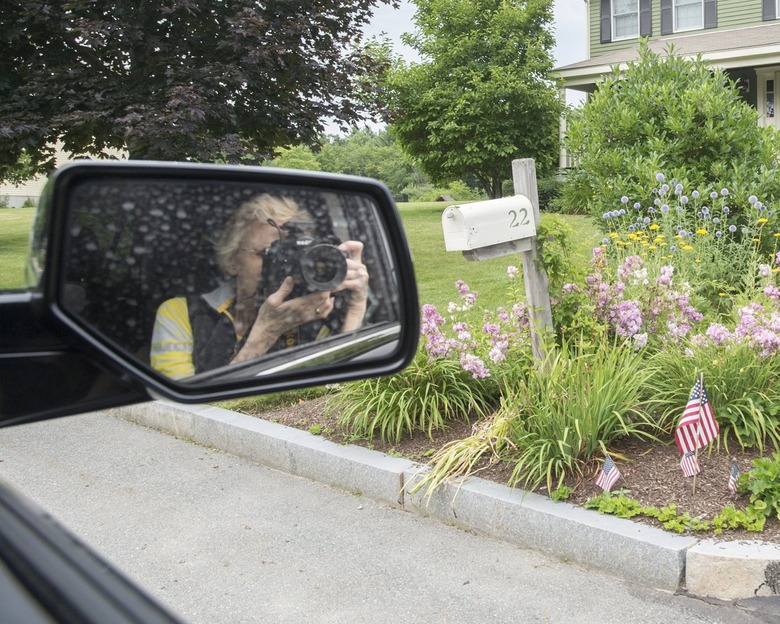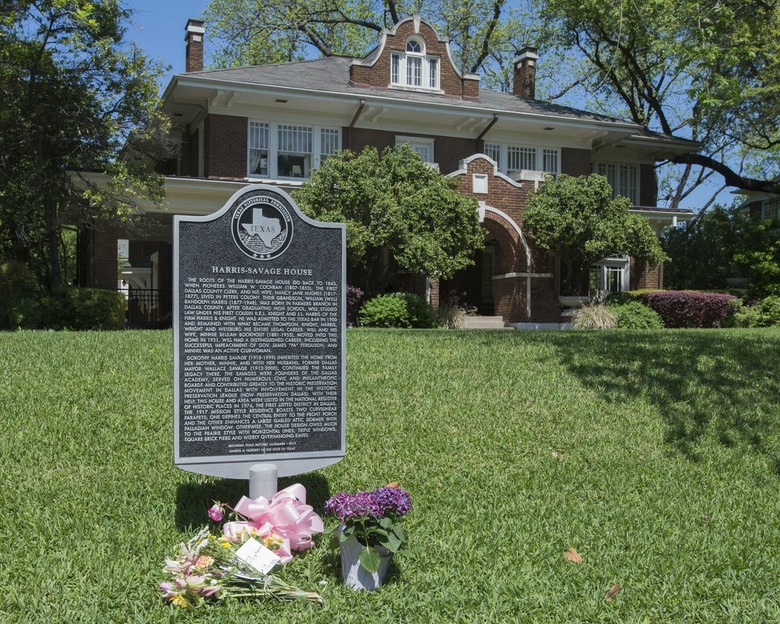How Virginia Savage McAlester Taught Me To Look More Closely At Architecture
We may receive a commission on purchases made from links.
When I was studying Historic Preservation in graduate school, I had to take a number of classes designed to teach me how to recognize, by sight and by materials testing, virtually every architectural style and material used in the United States. I loved the idea of turning my own brain into a kind of buildings-focused encyclopedia, but in practice I had a not-insignificant amount of trouble: Did those windows suggest a rowhouse I walked by was Georgian, or Federal style? Were the intricate cornices on a tenement apartment building Italianate, or Baroque? Were the fairy tale cottages I'd loved as a child Tudor Revival, or storybook ranch?
I had, at my disposal, thousands of pages of readings, notes, and course materials — not to mention the whole Internet. But more often than not, I found myself turning — as I still do — to Virginia Savage McAlester.
First published in 1984, Virginia Savage McAlester's A Field Guide to American Houses is, to the architecture critic and writer Alexandra Lange, "the reference book to answer questions I didn't know I was going to have. Whenever I would see someone on Twitter ask, What style is this house? Or, what do you call the doohickey over the door? I would think, Why are you even asking? Just buy the Field Guide."
McAlester sadly passed away in April of 2020, but through her remarkable work, her irrepressible and infectious fascination with the built environment lives on.
From homes built by Native Americans hundreds of years before the arrival of Europeans to the puzzling McMansions — McAlester christened them "Millennial Mansions" — of the late 20th century, every kind of dwelling is represented in McAlester's work, making it a reference book and also, for many, a tour guide. To wander the blocks in an unfamiliar city, filing away new kinds of rooflines and doorways and stoops, and then to comb for the drawings that match what you saw is to unlock a secret language of brick and stone and even concrete.
McAlester herself was intent on decoding the secret language of the built environment from an early age, as her daughter, filmmaker Amy Talkington, explains. "Mom said she first fell in love with architecture when her grandmother took her to Washington DC as a girl — the grandiosity of the Capitol and other buildings captured her. And she was brilliant in both math and art so studying architecture was a natural combination of the two. But I think her true love of architecture — and certainly her love of preservation — came from the love for her family home and her neighborhood. When the neighborhood was being threatened by developers, that's when she really engaged in preservation — to save it."
Born in Dallas and educated at Harvard, McAlester, in the late '60s and early '70s, worked tirelessly to secure the preservation of homes in danger of being torn down and replaced, and she was later the founder of Preservation Dallas, an organization that has, to date, helped establish more than 4,000 historic landmarks across all parts of the city, and Friends of Fair Park, an organization for which she recruited the whole family.
"Once, to raise money for Fair Park," says Talkington, "she asked us to dress up as bricks to try to sell bricks at the Texas Jam, a notorious heavy metal music festival in the Cotton Bowl. But we successfully convinced her that we'd get ridiculed — if not beaten to a pulp."
It was through her advocacy that McAlester recognized the need for an easy-to-read, comprehensive work that would allow readers to find the treasures in their own neighborhoods. "The book," says Talkington, "was an extension of her preservation work. When she was trying to get the neighborhood designated, she realized that, in order to do so, you had to identify the style of each house in the district. When she tried to find a book to identify the house styles, there was none. So, she set out to write that book."
One of the great joys in leafing through Field Guide is that McAlester has something nice — and something interesting — to say about virtually every kind of American house. It was through her eyes that I began to love, for the first time, the ranch houses of my suburban Los Angeles childhood — this one, with its midcentury-modern lines, or that one, with its Cinderella's castle-esque shutters.
McAlester's commitment to discovering the beauty in everyday places extended to her own life. "I love 20th century contemporary modern houses," says Talkington. "And, even though Mom lived in an older house, she also loved that style, especially the ones that integrated nature. She was looking forward to downsizing into a smaller, more modern house where she could look out the windows onto a garden."
Her work, and her obvious affection for it, is clear to those of us who remain devoted to Field Guide. "Even though most of my work as a cabinetmaker takes place inside," says Drew Zembruski, owner of Artifex Home, "A Field Guide to American Houses is still where I start a new project. The interior millwork should be a continuation of the exterior architectural design elements of a house; the ability to look up typical details for everything from front doors to dormers results in cabinetry that feels like it's always been a part of the home."
And as much as she was a devotee of the home, McAlester's enthusiasm for the world around her didn't stop at the front door. She loved the natural world, so much so that she turned her swimming pool — perhaps the ultimate symbol of suburban America — into a pond that became home to frogs, fish, and all manner of wild creatures. She traveled, and took her family on trips for research and on trips for adventure, sharing with them the parts of living history she herself had been so moved by.
And after she finished the revised Field Guide, published in 2013 — from a hospital bed, no less — she dove into her next project, A Field Guide to American Buildings. "As hard as she tried," says Talkington, "she was unable to finish that book but she made enough progress that we are going to be able to get the book finished and published. I am determined."
I write this from my apartment in Brooklyn, a place I haven't left much since last year. During the winter, I spent hours peering out of my bedroom windows, watching the street below for anything new — a car in an unusual color, a furniture delivery, a dog. I was tired, I thought, of looking at the same buildings day after day. But as buds begin to appear on the trees and the last of the snow melts away, I find myself appraising the buildings that surround mine with fresh eyes. The fire escapes in the apartment across the street, I noticed recently, are surprisingly elegant, with wrought-iron flourishes at the top of each grate. Next door, a rowhouse I'd never thought much of got a fresh coat of paint, making it clear to me for the first time that the first floor windows are set back from the façade, allowing the decorative arches above them to stand out from the street.
And next door to that house is something new — a house under construction, currently hidden by scaffolding and nets. Every day I check to see if some hidden detail has been revealed — will it be contemporary, or will it look like a newer version of its early 20th-century neighbors? Will there be brick, or metal, or stone, or concrete? I know even as these questions are answered, I'll almost certainly have more, and I know that Virginia Savage McAlester will be waiting on the shelf to help me figure them out.


